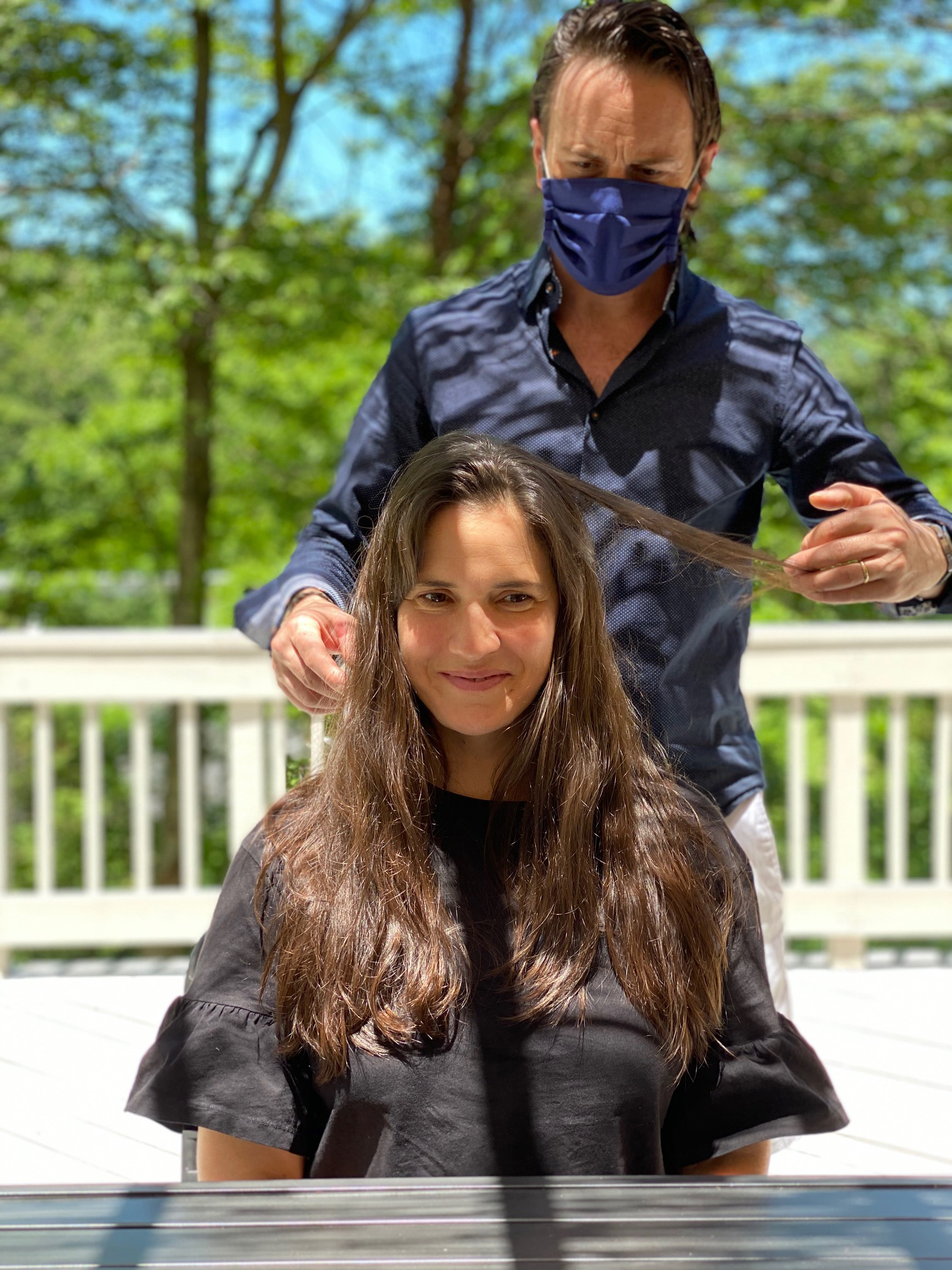In the midst of the stay-at-home orders, salon services became something of an illicit commodity, traded with Venmo payments and hush-hush appointments. There were rumors of nail salons ushering clients in through back doors, and while graying topknots became a de facto hairstyle of quarantine, some stylists were making discreet house calls.
Now, as lockdowns have lifted, many people are still interested in having a stylist come to them.
“You’re comfortable in your home, you know your home is clean,” says Maurcell Littleton, a hairstylist who works full-time at CBS but also keeps a roster of clients for traveling services. He says he respects that need for cleanliness: “As soon as I go in, I take my shoes off. I wash my hands and put on gloves. I have my own sanitizer spray and wipes. I already have my mask on.”
Professional haircuts at home might sound like an indulgence just for the rich, but the pricing can be comparable to that of a salon.
Some stylists, including Jérôme Obry of Izzy Salon in Georgetown, say they’re charging the same as they would at the salon when clients book directly through them—unless, Obry says, he has to travel more than 20 miles.
In certain instances, the difference isn’t that much. For example, while Drybar charges $49 for a salon blowout, Glamsquad, the on-demand beauty app, will send someone to your home for $55.
Tasha Gaymon of Salon Leau in Georgetown typically charges $150 for a house-call haircut, as opposed to $110 in the salon. A blowout is $125 versus $85.
A few stylists we spoke to, however, said home services can cost two to three times as much when booked through a salon. Often, at-home services turn into a family affair. “I was going to do one of my clients’ hair at her house this morning and ended up cutting her, her two-year-old son, and her husband in their driveway,” says Obry. “I never cut hair in a driveway before—now I can say I have.”
While customers may see at-home cuts as easier, Obry says they actually can be more of a challenge. “The main thing missing every time is the mirror. It helps you with your lines when you cut. I’ve done a lot of [fashion] runways, so I’m used to it. But you have to keep yourself focused a little bit more than you normally do.” Home cuts and color can be more work for clients, too—they may have to sweep up the clippings and rinse out the dye in their bathroom.
Even so, it’s not just clients who may be hesitant to return to normal. Stylist Remona Soleimani says she hasn’t felt comfortable enough to go back to Noufal Haircolor Studio in Vienna and has instead started doing at-home services outside for some customers: “I feel safer doing the haircuts outdoors. I know salons are taking every measure to ensure the safety of their clients and employees—this is just a personal decision.”
Those who do make house calls aren’t taking chances, though. Gaymon limits home visits to one a day: “Personally, I don’t feel it’s safe to go from house to house to house. I’d have to change my clothes. My biggest thing is safety.”
Right now, most stylists are letting clients’ comfort level take the lead. “I tell people, ‘Whatever you want: You want a house call, fine. You want to meet me at the salon, fine,’ ” says Jamie Simon, who works out of Phenix Salon Suites in Bethesda and a space above Dupont Circle. “For the foreseeable future, this is going to be the new normal.”
This article has been corrected since its original posting.















